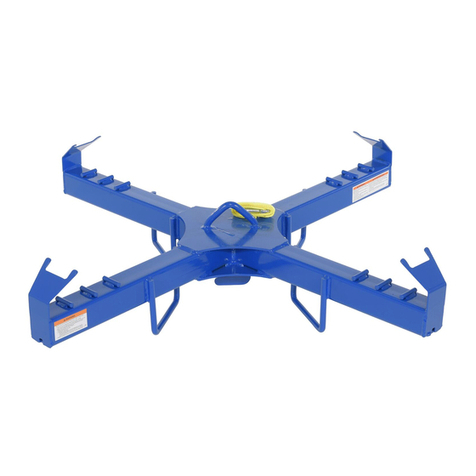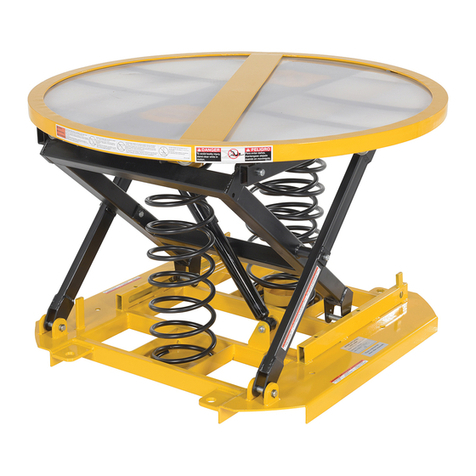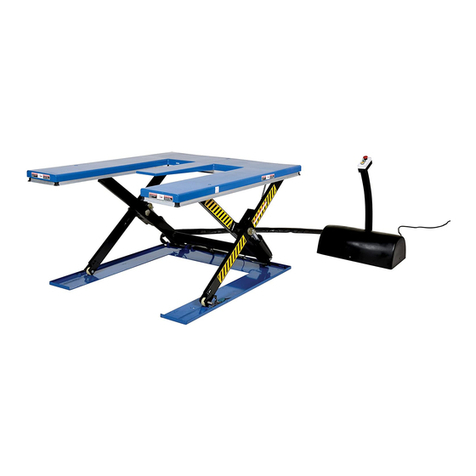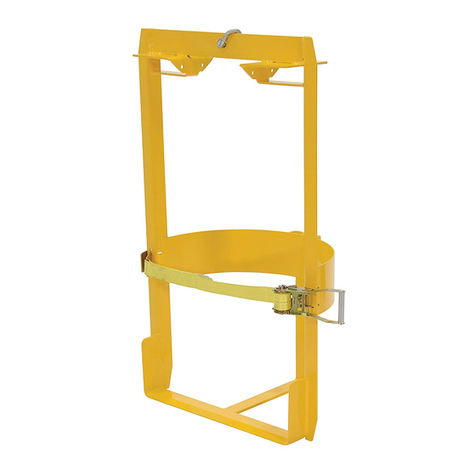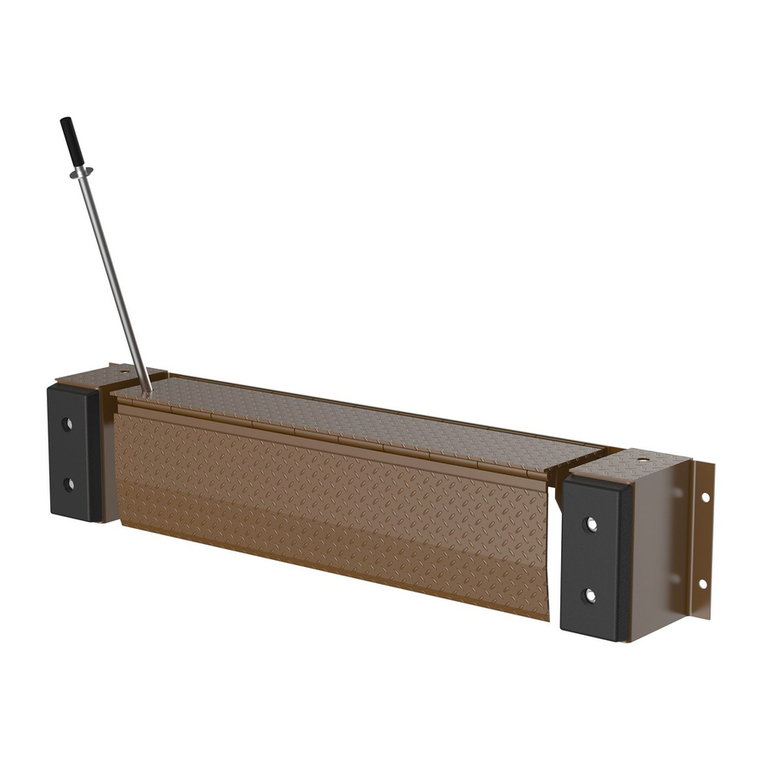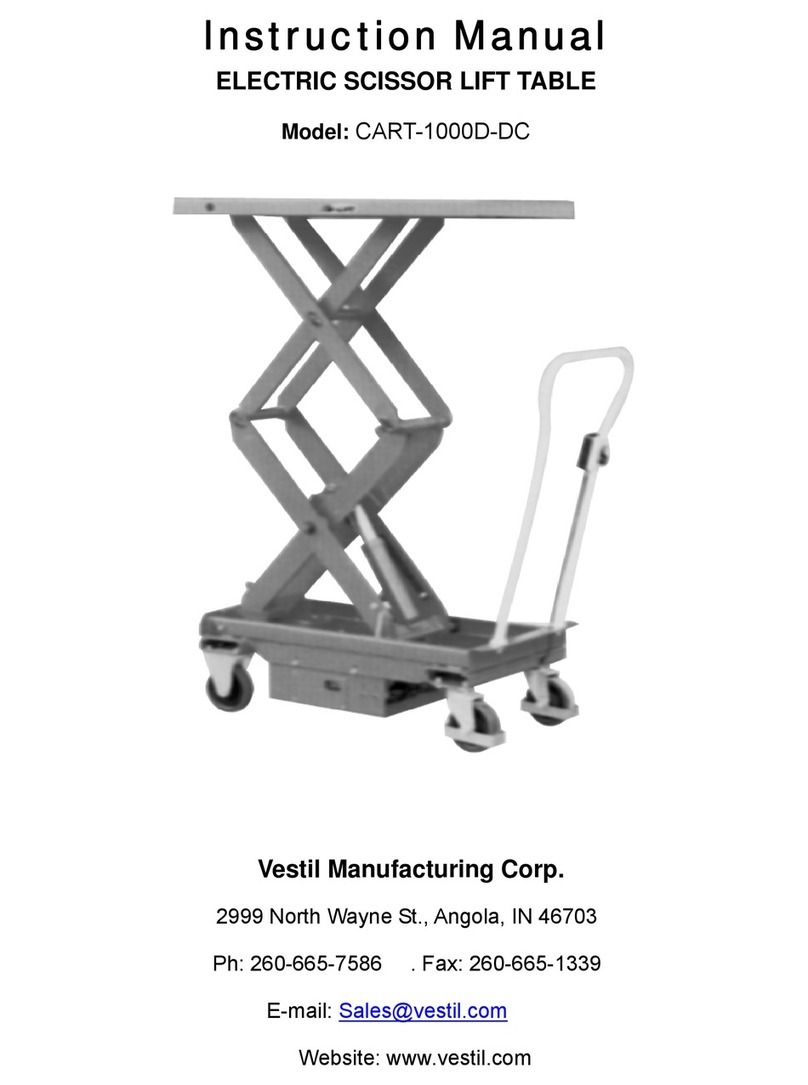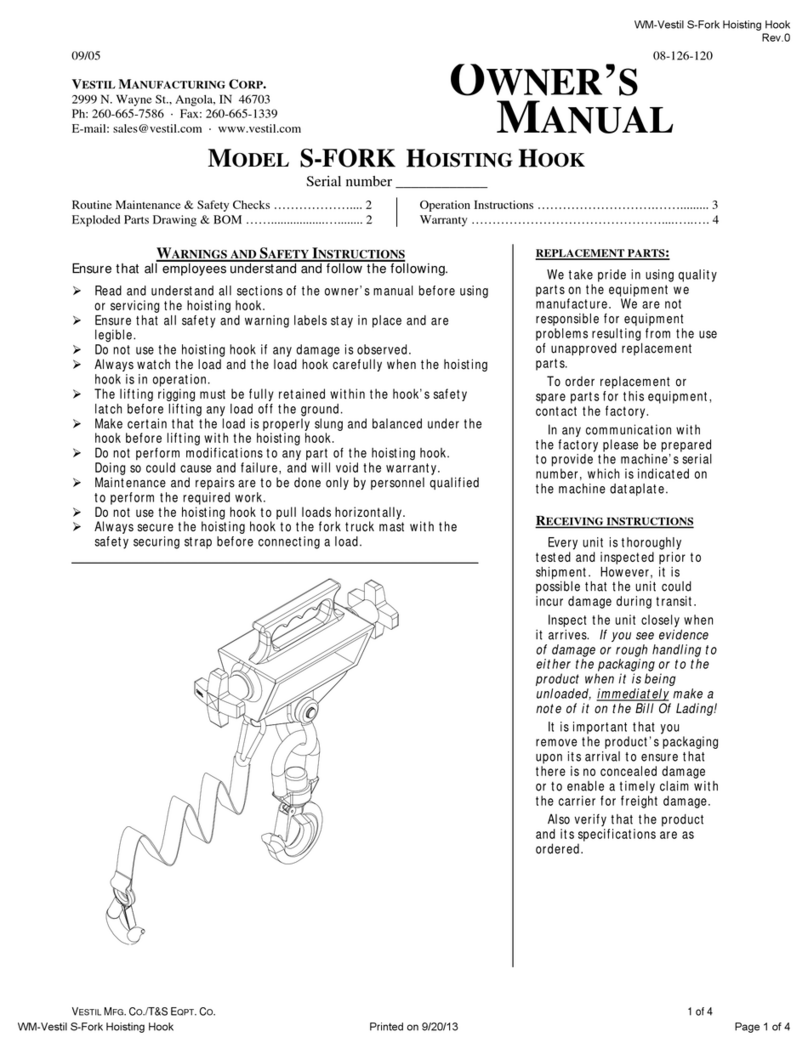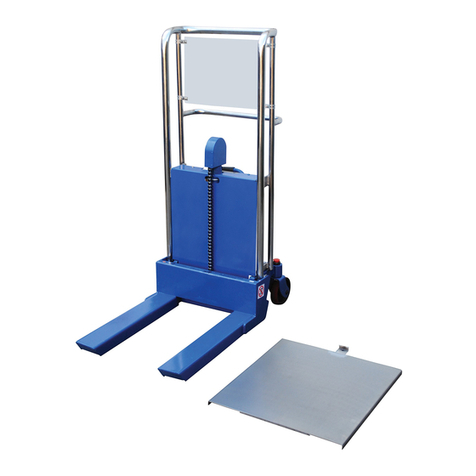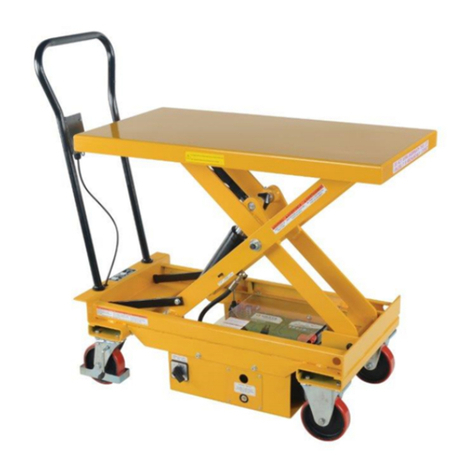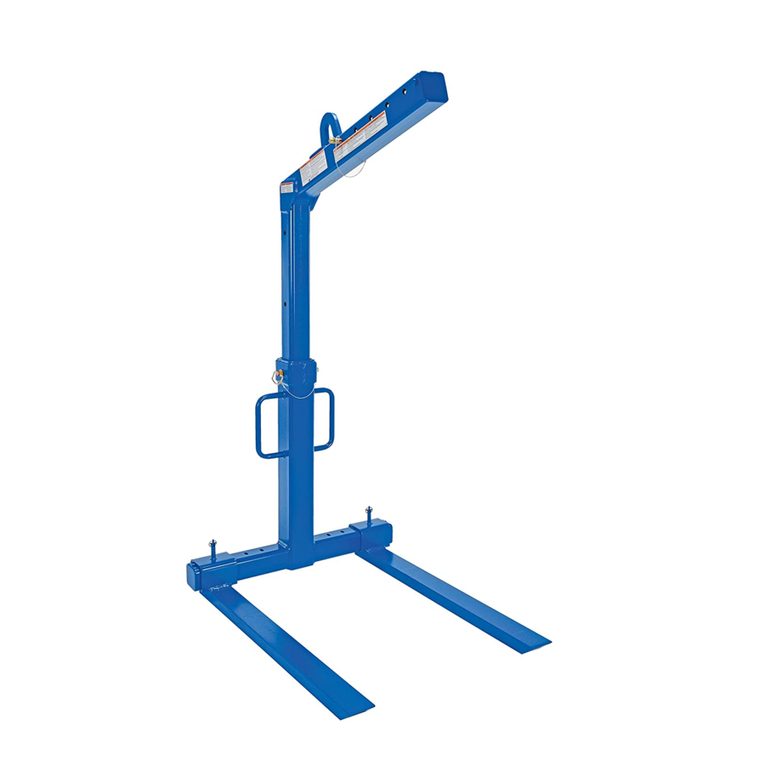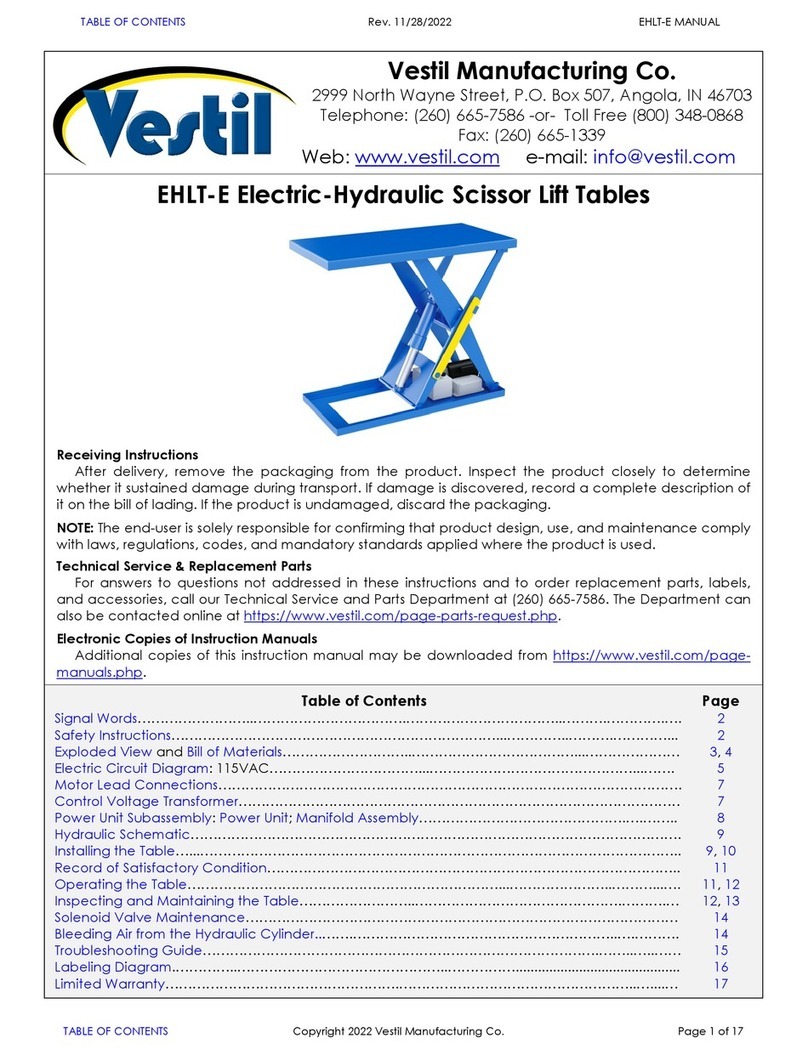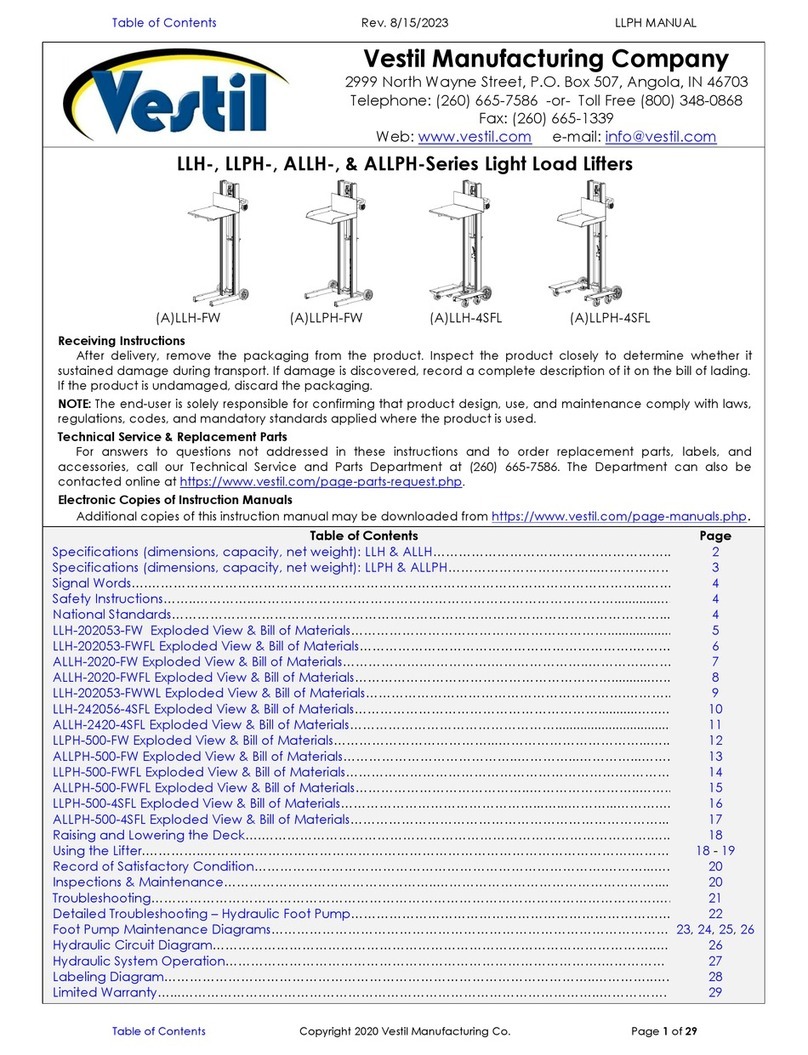
TABLE OF CONTENTS Rev. 11/3/2021 FPG, MANUAL
TABLE OF CONTENTS Copyright 2021 Vestil Manufacturing Co. Page 9 of 11
RECORD OF SATISFACTORY CONDITION (THE “RECORD”)
Thoroughly inspect the crane after assembling it and before putting it into service. Record the condition
and appearance of each of the frame members (I-beam, posts, base frame weldments), casters, beam
clamps, and all fasteners (bolts, nuts, etc.). Thoroughly photograph the crane from multiple angles. Include
close range photographs of the casters, all labeling, and all beam clamp connections. Add the photographs
to the record. Collect all photographs and writings in a single file. This file is a record of the crane in
satisfactory condition. Compare the results of all INSPECTIONS to this RECORD to determine whether the
crane is in satisfactory condition. Do not use the crane unless it is in satisfactory condition. Purely cosmetic
changes, like damaged paint or powdercoat, are not changes from satisfactory condition. However,
touchup paint should be applied as soon as damage occurs. If your crane is not painted or powdercoated,
touchup paint is not required.
INSPECTIONS AND MAINTENANCE
NOTE: Inspection procedures are included in the most current revision of ASME B30.17. As stated
above in the NATIONAL STANDARDS section, Vestil recommends that you acquire a copy of the most
recent revision of this standard. Apply all use and maintenance/care instructions in the standard. Vestil
also recommends that you contact your local occupational health and safety authority to determine if
any laws, regulations, codes, ordinances, etc. apply inspection requirements where the crane is used.
Inspections and all necessary repairs should be performed by qualified persons. Compare the results
of each inspection to the RECORD OF SATISFACTORY CONDITION. Do not use the crane unless every
part is in satisfactory condition. DON’T GUESS! If you have any questions about the condition of your
crane, contact the TECHNICAL SERVICE department. The phone number is provided on the cover page
of this manual. Never make temporary repairs of damaged or missing parts. Only use manufacturer-
approved replacement parts to restore the crane to satisfactory condition.
A. Before and after each use, including first use, unload the crane and inspect the following
components:
1) I-Beam – Examine the beam, especially the lower flanges, for bends, cracks, and other damage.
2) Beam clamps and beam clamp fasteners –Clamp connections are shown in STEP 1 on p. 6. Verify
that all lock nuts are present and tight. The clamps (28-145-002) should equally overlap the I-beam
flange.
3) Beam brackets – Look for cracks, warps, bends, etc.
4) Casters and caster fasteners –Examine each caster for cracks, warps, cuts, grooves, pitting,
significant wear, etc. Push the crane a short distance. All 4 casters should maintain continuous
contact with the ground. Confirm that the casters roll smoothly, e.g. without wobbling or skidding.
Make sure that caster fasteners (bolt and nut combo) are tight. Fastener connections are shown in
STEP 2 on p. 7.
5) Base frame weldments – Inspect both base frames. Look for cracks, bends, warps, and other forms
of damage. Pay particular attention to bolt holes and caster brackets. Look for elongations, cracks,
etc. Look closely for corrosion/rusting where posts attach to the base frames.
B. Monthly inspections – Unload the crane and inspect the following:
1) Beam clamps and beam clamp fasteners – Tighten all loose nuts. Pay particular attention to the
quality of contact between the beam clamps and the beam flange. Every clamp should solidly
contact the flange. The degree of flange overlap should be the same for all 8 clamps. Use a torque
wrench to tighten each bolt and nut to 50-52ft∙lb. Examine all of the clamps for damage such as
deformations and cracks. The I-beam flange should be solidly/immovably clamped to the tops of
the posts.
2) Posts – Examine the base of each post. Closely inspect the fasteners that connect a post to the
base frame. Look for cracks, rust/corrosion, and other forms of deterioration and damage. Make
sure that each post is solidly fastened to its base frame. Thoroughly examine the rest of each post,
including the beam bracket, for damage. Bolt holes in beam brackets must not be elongated,
rusted, cracked, etc.
C. Once per year: Perform a load test of the crane. Lift a load equal to 125% of its rated load
(capacity). Only lift the load high enough to ensure that it is entirely supported by the crane. Transport
the load by means of your hoist (or hoist & trolley) the full usable length of the I-beam (dimension C in
SPECIFICATIONS table). Return the test load to the ground. Perform inspections A (Before and after each
use) and B (Monthly). NOTE: Perform this part C (Load test and a Before & after use inspection)
whenever the crane is partially or fully disassembled and reassembled, e.g. after installing replacement
parts.



